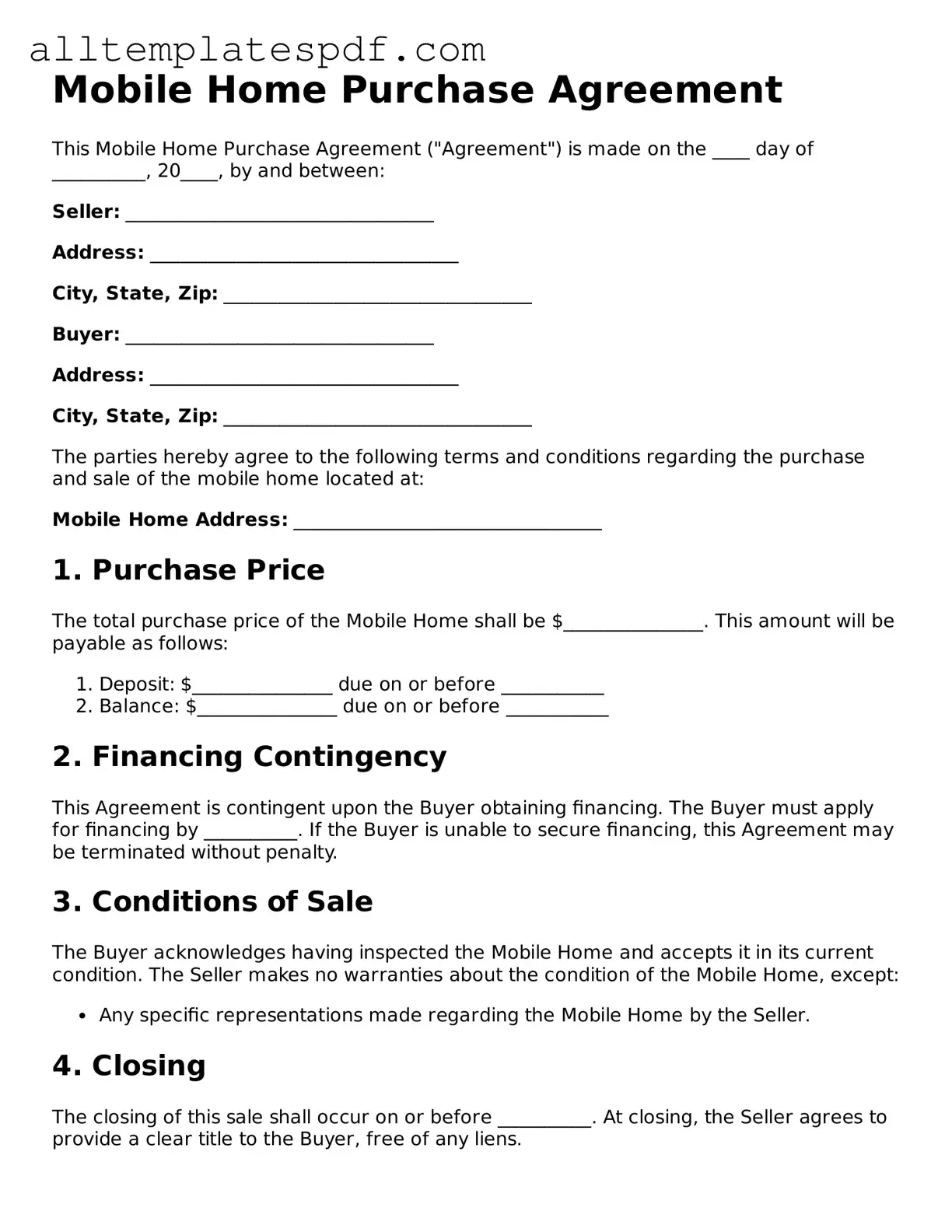Filling out a Mobile Home Purchase Agreement can be straightforward, but many people make common mistakes that can lead to complications. One frequent error is failing to include all parties involved in the transaction. If you’re buying the mobile home with someone else, ensure their names are on the agreement. Omitting a buyer can create legal issues down the road.
Another common mistake is not specifying the purchase price clearly. Ambiguities can lead to disputes later. Write the exact amount in both numbers and words. This simple step can prevent misunderstandings about the agreed-upon price.
Some buyers overlook the importance of including a detailed description of the mobile home. This includes the make, model, year, and vehicle identification number (VIN). Without this information, it can be challenging to prove ownership or resolve disputes regarding the specific mobile home being purchased.
Not addressing the payment terms is another pitfall. Specify how the payment will be made—whether it’s a lump sum, financing, or another method. Clearly stating this helps both parties understand their obligations and can prevent future conflicts.
Buyers often forget to include contingencies. These are conditions that must be met for the sale to proceed, such as securing financing or passing a home inspection. Without contingencies, you may find yourself locked into a purchase that doesn’t meet your needs.
Another mistake is neglecting to read the entire agreement before signing. This may seem basic, but it’s crucial. Take the time to review every section. Look for clauses that may not align with your expectations or needs.
Some people fail to include a date for the agreement. Without a date, it can be unclear when the terms of the agreement take effect. This can lead to confusion and potential disputes about timelines.
Lastly, not keeping a copy of the signed agreement is a significant oversight. Always retain a copy for your records. This ensures you have proof of the terms agreed upon, which can be invaluable if any issues arise in the future.
